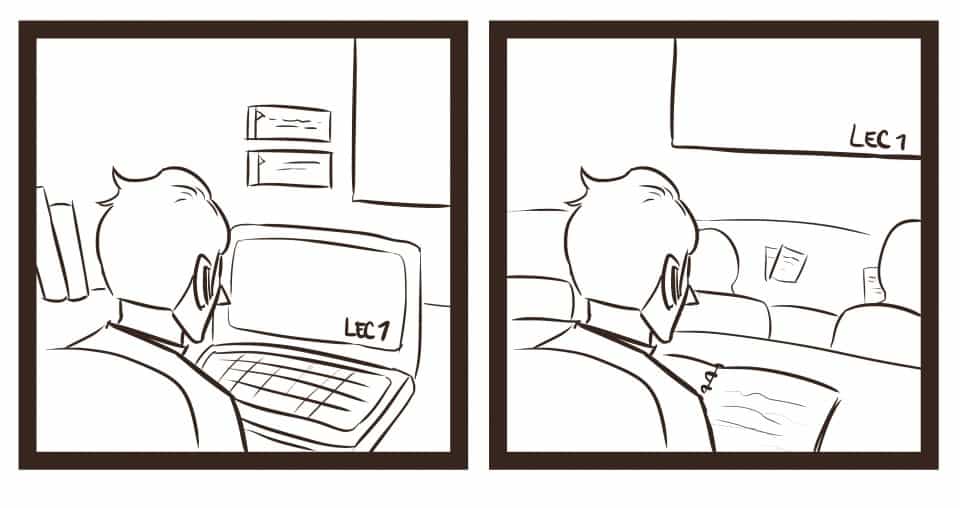In an age of technology and readily available information, course instructors are experimenting with the inverted classroom teaching format.
Gaining popularity among academic institutions around the world, the inverted classroom model requires students to cover lecture material at home through online lecture videos, learning modules, and supplementary readings. During scheduled class hours, students then have the opportunity to actively engage with their professor to gain further understanding of the material. The purpose of this alternative approach is to give students the opportunity to improve their skills in a more interactive environment.
Professor Mairi MacDonald is one of many U of T professors who have decided to take advantage of this teaching style, implementing it in her course Ordering International Relations in an Age of Empire, a required course for students studying international relations. “Having class time devoted to discussion or other activities gives the students an incentive to complete the readings and prepare for class by listening to recorded lecture material, so my hunch is that they do take a bit more in than they might in a conventional lecture class.”
MacDonald said that while the model is successful in providing a seminar experience for students, she believes it will face limitations in becoming common practice at the university. “To implement on a wide scale would also require the university to provide widespread access to relevant tech support. The University would have to decide that the pedagogical advantages are worth the high cost of faculty and technical time.”
Statistics professor Nathan Taback is also taking advantage of the inverted classroom in the style of STA220, The Practice of Statistics 1. Despite recognizing the disadvantages resulting from this method, such as the additional effort required and the dependency on students coming to class prepared, Taback is very optimistic on the future of the inverted classroom in U of T.
Taback emphasized the importance of getting students to deepen their knowledge beyond just memorizing facts, which are readily available. “This is really important in today’s world since we have so many facts at our fingertips, but people will need to become even better at assimilating these facts in the future. I believe that many jobs in the future will require this skill. So there should be a much greater focus on deep learning in the classrooms at U of T [and other universities].”
Regardless of whether or not the inverted classroom is here to stay, it is clear that it remains controversial among students.
Student Aylin Manduric found the method very effective and enjoyed the flexibility it provided. However, she too recognized some of its limitations. “Some students felt that it placed too heavy a burden on [them] to listen to the lectures on their own time, preferring the structure of designated lecture times [and] that it left a lot of leeway to skip the online lectures without the professor noticing. This is why it is necessary to pair reverse classroom with seminars or meetings, to help keep everyone on track.”
On the other hand, third-year student Isaac Kim strongly opposed the inverted classroom. “Why am I getting deprived of a classroom experience when I could be learning this stuff just as well, just ‘unofficially’ through the hundreds of open source material[s] provided by other prestigious universities, because it gets into the issue of where we are literally paying just for the degree now, rather than the educational merit itself since the information is nothing more than another educational video on the internet,” he said.
The inverted classroom is part of U of T’s plan to integrate more technology to the educational environment, alongside the commitment to offer more massive open online courses on online learning websites such as Coursera.


